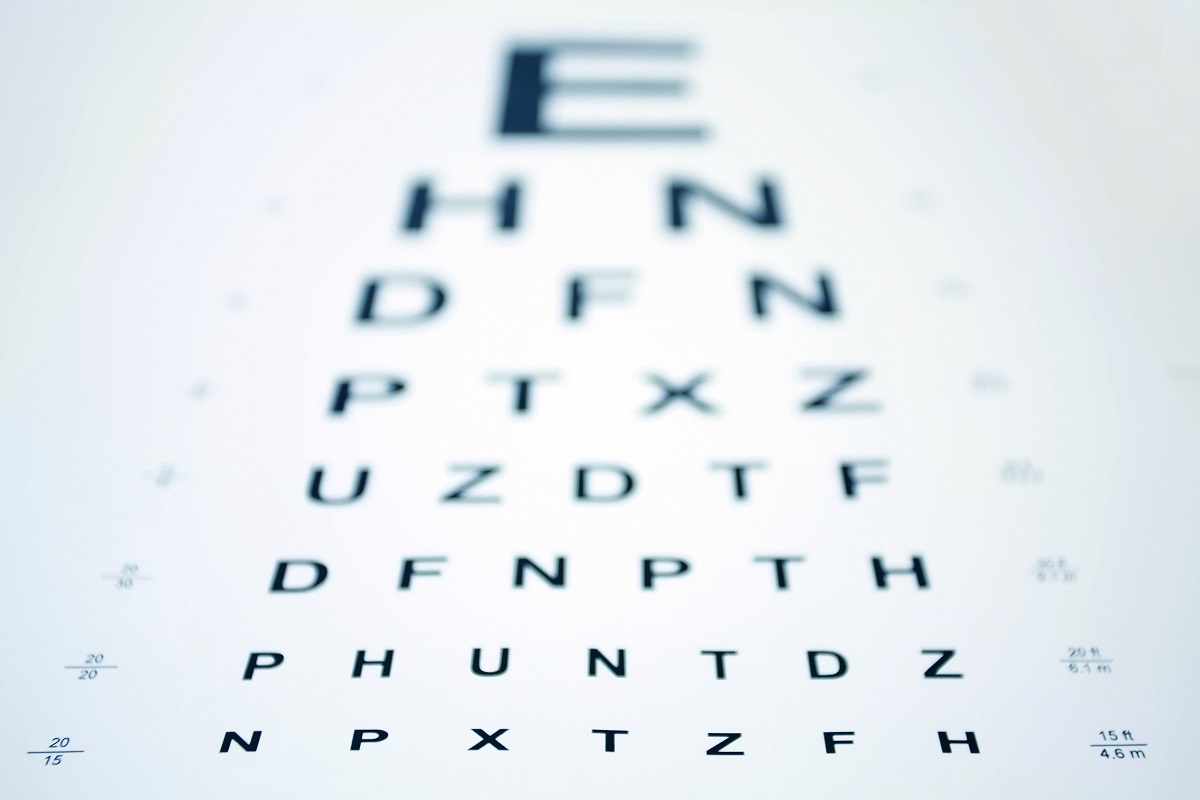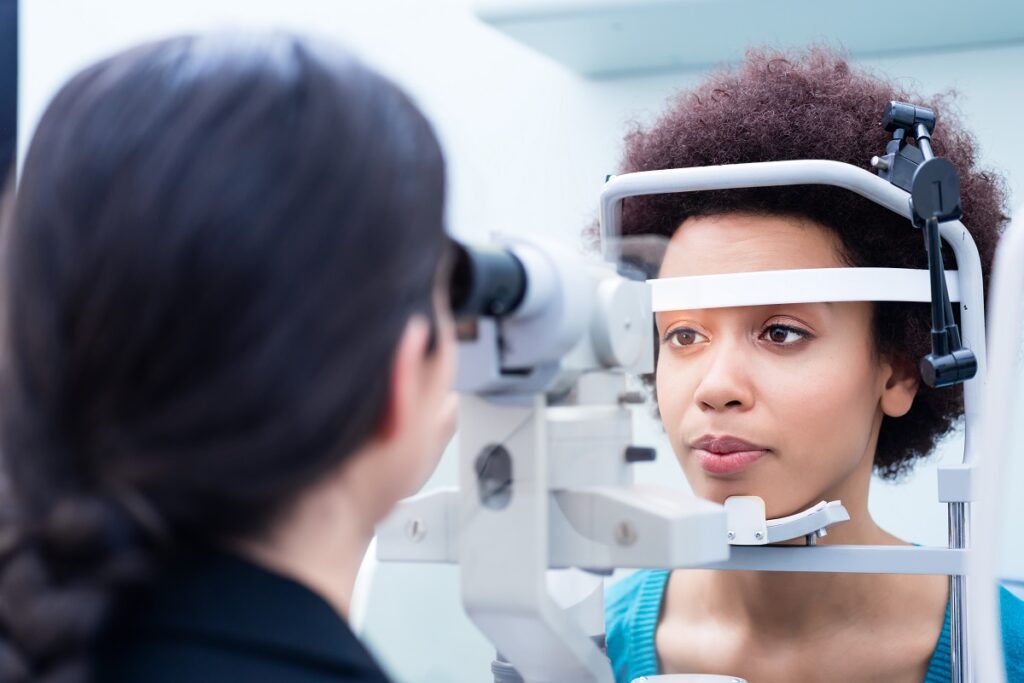During your visit to an eye surgeon or ophthalmologist, they will perform an eye test to determine what eyesight correction you require. The eye test is not a test you have to study for or do anything special before. However, we do recommend you get plenty of sleep the night before your visit.
The most common eye test you probably are aware of is the eye chart with all those letters on it. The letters have multiple lines and gradually get smaller and smaller. Your optometrist will ask you to read various rows on the eye chart to determine the smallest letters you can see. Based on the results of this test, it helps establish a basis for your visual acuity.
Another type of eye test some eye doctors use with younger patients that may not know all their letters is one that has the letter “E” pointing in different directions. The eye doctor will ask you what direction the “E” is pointing on various rows. The outcome of the test is identical to the traditional eye chart to establish your visual acuity.
What Is Visual Acuity?
Visual acuity is the eye’s ability to focus on stationary objects and images of varying distances and the sharpness of their appearance. When objects and images look crisp and clear, it means you have decent visual acuity. On the other hand, when objects and images look fuzzy or blurry, it means your visual acuity is not that good.
It is important to point out visual acuity is just one part of determining what eyesight correction you require. It is not an ideal measure for determining how objects and images appear when they are moving; are of similar brightness levels; or are of different colors, shades, and hues.
What Does “20/20” Vision Mean?
You may have heard your ophthalmologist use the term “20/20” vision. What this means is that your eyes are able to see clearly when you are 20 feet away from the eye chart. Typically, this is the third or fourth row from the bottom of the eye chart. So, if you have “20/20” vision, it simply means you can see objects and images that most other people with uncorrected vision can see at 20 feet away of a particular size.
How Is Near Vision Tested?
Aside from the traditional eye chart, another type of eye test might be given using what is called a Jaeger eye chart. This eye chart has short paragraphs of text your eye doctor will ask you to read. The chart is typically placed about 14 inches away from your eyes. The smallest text you can read will help determine your near visual acuity.
What Do Eye Tests Tell My Eye Doctor?
Eye tests merely help your eye doctor determine what type of eyesight correction prescription you need. For instance, if your eye tests determine you have “20/40” vision, they will write a prescription so that you can see “20/20” with glasses or contacts.
In cases where you are getting LASIK surgery or another type of laser vision correction eye surgery, your eye tests help your eye surgeon know what types of corrections need to be made to the eye to improve your vision.
Aside from eye tests, your optometrist will also use other types of testing methods to check for depth perception, contrast perception, peripheral vision, and color perception. These tests further help your eye doctor determine whether you have certain eye problems, as well as what prescription or vision correction surgery is best for you.
For further information about LASIK surgery and other corrective eye surgery options, as well as general ophthalmology services, please feel free to contact ADV Vision Centers at (805) 987-5300 today. We have three office locations in the Central Coast of California in San Luis Obispo, Santa Maria, and Paso Robles.



